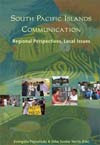 Some Manila communities are taking the matter into their own hands in the daily struggle for water. They are forming water cooperatives in a bid to survive
Some Manila communities are taking the matter into their own hands in the daily struggle for water. They are forming water cooperatives in a bid to survive.
By Keira Stephenson: The Philippine StarMANILA, Philippines: “Water is life,” says Maharlika Water Cooperative member Lorda Feudo, yet more than half of Metro Manilans still don’t have clean water on tap.
Those least able to afford it are spending the bulk of their salaries buying water or wasting their days chasing water-trucks up and down the street.
However, some communities are taking the matter into their own hands by forming water cooperatives, so the daily struggle for water is one less thing they have to worry about.
“Before we started the co-op and got connected to Maynilad Water, life was very hard,” said Feudo.
“It was difficult relying on trucks to deliver water. We had to wait and run after the truck many times. Sometimes the trucks were not coming, so the day was useless, only watching for a truck that didn’t arrive,” she said.

“It is so tiring, running to get water and then running home carrying the pails,” she said.
“Sometimes we had to fight others who cut into the line. Those who know the truck driver got more water. Everyone was very frustrated, sometimes angry,” another member, Noemi Pajo, added.
The cooperative’ office is in Maharlika Village, Bagansila, Caloocan City, a relocation site for squatters.
Inside the office large charts show the co-op’s monthly cash flow as well as the position of each board member.
Water barrels line the streets outside the houses of those who have opted not to join the co-op.
“Financial transparency is very important,” Feudo said.
Maynilad Water had been promising water connections since 2002 but has been unable to deliver. Eventually after the co-op was formed in 2008, it was asked by Maynilad to help provide water to other local households demanding its services.
Do-it-yourself water systemCo-op members put up the cash and work to install pipes themselves and instead of having a meter for each household they have just one “mother meter” which measures the entire co-op’s water consumption.
In effect they are buying the water in bulk from their water provider and taking care of the pipes and fee collection.
The Maharlika board comprises housewives who receive help and free workshops from the Institute for Popular Democracy on how to set up a cooperative, write a business plan and build consensus.
“We are all mothers,” Feudo said. “The men are all at work, they don’t do household chores, so they don’t know our water needs. They come home and say ‘Why don’t we have any water?’”
The women run the co-op, each board member volunteering one day a week in the office while a manager, plumber and cashier receive salaries of P3,500 per month.
Despite the extra work of running the co-op the women say life has changed for the better since the daily struggle to find enough water has come to an end.
“Household costs become very easy, everything becomes easy. When we want to take a bath we can. We don’t have to wait. We can do washing when we feel like it. We are more relaxed, life became very easy because water is life,” Feudo pointed out.
According to the IPD, households in non-connected areas can spend as much as P19,300 (NZD$600) per month on water, including labor costs for hauling, compared to an average P80 (NZD$3) for those connected.
In Maharlika, households have gone from paying up to P1,750 per month for water to P600.
“They may not feel it because they pay on a daily basis, but most of their income is going to water,” said IPD researcher Christine Quiray.
Quiray helped the women form their co-op and can attest to the chaos of water truck deliveries.
“I remember holding one training seminar where suddenly right in the middle, everyone dashed out of the meeting because a water truck had been sighted,” she said.
The co-op has 172 members so far and aims to attract 1500.
It wasn’t easy getting people to accept the idea of joining and fronting up the initial costs of installing water pipes and a mother meter, especially when they could get free, but not enough and not necessarily drinking quality, truck water.
“They had to see the pipes installed in the streets outside their houses before they would really believe it could happen and pay the P1,100 startup fee,” said Feudo.
Simple beginningsThe co-op began with just 22 members and P22,000, but fundraising and a donation of 20 pipes from the son of the town’s mayor who said he was “happy to help people who are helping themselves” got them started. After a year of successful running it was able to secure a grant from the Peace and Equity Foundation.
Quiray once took the group on a study tour to visit the Lusrai co-op which started with water and has gone on to provide “ad-on services” such as life insurance, in Antipolo City and in Binangonan, Rizal where there are 21 co-ops, the oldest having been formed in 1976.
Now, as the pilot water co-op of IPD, Maharlika co-op now receives visitors itself.
The women proudly related that guest researchers from China, Singapore, Sweden and California are keen on learning about their project.
But despite its success the co-op is still far from reaching its target of 1,500 household members.
“We feel okay, but we are worried that there are few applicants,” said Feudo. “But we feel we should continue, no matter what.”
She said they had a surge of applicants during the dry season, but had to compete with the local government water provider who charges only P6 per cubic meter of water compared to Maynilad’s P12.
But the local government water may eventually close down because it is reportedly running at a loss, and its water is often not suitable for drinking. Moreover, its system has low pressure and works only from 5 p.m. to 8 a.m.
In comparison, the women say Maynilad’s water is very reliable and safe for drinking, although they still boil it for infants.
The local government also trucks in free water.
The IPD has asked the local government to use some P400,000 (NZD$12,380) it spends on trucking in water to invest in structural development instead for the co-op so that more water connections can be put in place.
The IPD believes this would be a much more efficient use of government funds, and a much more effective means of getting water to the constituents. The proposal has gotten a lukewarm response from the local government.
Another IPD researcher Erik Villanueva sees water co-ops as vehicles for engaging ordinary people in the workings of democracy and throwing off Filipino fatalism and apathy.
“The fight for water can open up a way to challenge local political elites,” he said.
Water co-ops popularVillanueva said water co-ops are now widespread in Metro Manila, especially on the outskirts, and it is not just the urban poor who are making use of the system but middle class homeowners’ associations too.
“It wouldn’t have been possible for the spread of water without water co-ops,” Villanueva pointed out.
Currently, one of the IPD’s projects is forming a water co-op network association to bring all the different co-ops together for sharing of expertise.
They are also negotiating for a bulk discount from the water providers, but neither Manila Water nor Maynilad Water is interested in offering a discount.
Quiray describes the situation as selling “retail and wholesale at the same price.”
Villanueva can understand the reluctance on the part of water providers to invest in some areas they consider high risk, like squatter settlements.
Since squatter communities usually are not titled, investors are worried they will not be able to recover their expenses if the settlers are evicted.
Also non-revenue water (NRW) can be as high as 70 percent in some areas, from leaks, water theft and people simply not paying their bills.
Quiray said Maynilad told her that recovering costs from places such as the North Caloocan resettlement area was extremely difficult and that even just fixing damaged pipes could cost more because they had to send an extra worker to guard the truck so the tires wouldn’t get stolen.
Villanueva said when the community takes over the management, these issues cease to be a problem as it is much more difficult to avoid paying your bills when it is someone from your own neighborhood collecting.
“The incidence of NRW is very low when the community patches the leaks and collects the fees themselves,” he said.
Despite this, the water providers still claim ownership of the pipes and meters which the co-op has installed because there are no clear legal protection for co-ops.
“How do you encourage urban poor or middle-class to invest in their own infrastructure, when neither the government nor the water services recognise or support their efforts?” Villanueva asked.
Relationship of patronageHe said he believes local leaders promise water connections, which often don’t get fulfilled and then deliver free water from trucks in the meantime, with their faces plastered all over them, “so that the people will know who to be grateful for.” He said such kind of behavior destroys the will of people to act on their own and organize.
He described watching people scrabble for water from trucks as “horrible and disgusting.”
“Politicians exchange services for votes and this becomes the currency by which the relationship of patronage is maintained,” he said.
“Instead of services like roads and water being the normal function of government, they are handed out like goodies in exchange for votes and the political elite maintain their position by exploiting the apathy of these voiceless, faceless, helpless masses who choose to remain dependent on someone else.”
He cited roads which ended abruptly at a village that didn’t vote for the local governor as examples of “a democratic system that fails.”
He admitted that it is “not just the fault of officials, but those who elect them.”
Water co-ops are a way of sidestepping these traps, he said, freeing both the community and their elected leaders to campaign and vote on real issues rather than relying on many officials preoccupied with raising cash to buy the loyalties of their constituents.
Housing project gone awryMeanwhile, another water co-op is being set up in Recomville 2, a village described by a non-government organization worker as a “government housing project gone awry.”
“Can you imagine a government housing project with no electricity and no water?” the NGO worker who declined to be named asked.
The village has already formed its own electricity co-op.
The water-barrel lined streets are a hodge-podge of finished and half-built houses with weeds growing up through cracks.
A father bathes his child beside one of the barrels outside his house on the street.
A meeting was held in a hastily constructed hall not big enough to accommodate everyone so that some attended by looking in through the windows.
However, those at the meeting had great hopes for the future of their village.
A homeowners’ association official said, “It just takes someone to start a project and when they see it working there is no need to invite people to join, they just start paying and paying.”
Lyn Tayawa is a mother of two who is helping to organize the co-op before she has even moved into the neighborhood.
“I am just waiting for the pipes to be connected so I can move here and open my store,” she said. “We are all very excited to have water here."
Pictured: A father bathing his daughter from free water delivered by trucks in Metro Manila. Photo: Keira Stephenson.Keira Stephenson is a Bachelor of Communication Studies (Honours) postgraduate journalist working on internship with the Philippine Star with a travel grant by the Asia NZ Foundation and supported by the AUT Pacific Media Centre.More stories by Keira StephensonKeira's 'live journal' from Manila
 Pacific Media Centre
Pacific Media Centre





_cover72RGBsml.jpg)





































